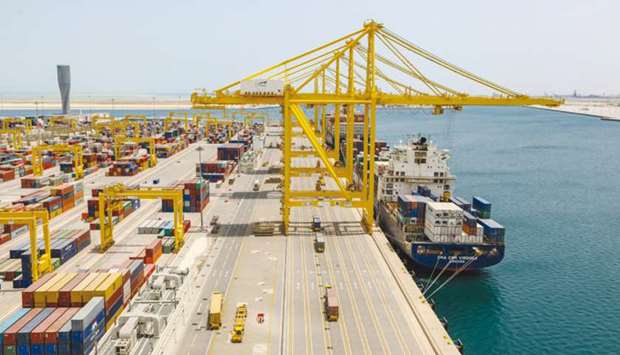The general cargo movement through the Hamad, Doha and Al Ruwais ports continued unhindered in June this year, amidst Covid-19, as it saw a robust three-digit surge year-on-year, according to official figures.
On a cumulative basis, the general cargo movement witnessed a healthy year-on-year growth in the first six months of this year, indicating the fruition of the government’s well-calibrated strategies to limit the spread of the pandemic, said the figures from Mwani Qatar.
Qatar's maritime sector witnessed a double-digit yearly expansion in the handling of livestock and the containers.
The general cargo handling saw a 169.49% increase year-on-year to 161,553 tonnes in June 2020. It saw a 4.69% rise month-on-month, said Mwani Qatar's performance statistics.
Mwani Qatar is committed to building more efficient and sustainable supply chains that generate and promote economic development in line with the Ministry of Transport and Communication's strategic plan, aiming to transform the country into a vibrant regional commercial hub.
The cumulative general cargo movement through the three ports reached 727,716 tonnes during the first six months of this year.
The container handling through the three ports stood at 116,256 TEUs (twenty-foot equivalent units), which increased 10% and 4.85% on yearly and monthly basis respectively in June 2020. The container movement totalled 673,399 TEUs during January-June this year, thus registering about 2% on an annual basis.
The number of ships calling on these ports was 238 in June this year, representing 25.16% and 3.25% decline year-on-year and month-on-month respectively. As many as 1,509 ships had called on the ports during the first six months of this year.
Hamad Port’s strategic geographical location offers opportunities to create cargo movement towards the upper Gulf, supporting countries such as Kuwait and Iraq, and south towards Oman, QTerminals chief executive Neville Bissett had earlier said.
The works on the 403,500 sqm container terminal 2 (CT2) at the Hamad Port has already begun as part of the country's expansion strategy in its maritime sector. The CT2 is slated to be operationalised by the end of fourth quarter (Q4) of this year.
The three ports had handled 19,812 livestock in June this year, which witnessed a stupendous 76.42% surge on a yearly basis. Nevertheless, it plummeted 52.18% month-on-month. The three ports had seen a cumulative figure of 305,504 heads during January-June 2020.
The building materials handled through these ports amounted to 21,633 tonnes, which increased 0.52% month-on-month; but shrank 16.94% on a yearly basis this June. A total of 144,846 tonnes of building materials had been handled by these three ports during the first six months of this year.
The ports handled a total of 3,256 vehicles (RORO), which declined 34.67% and 25.01% on yearly and monthly basis respectively in the review period. A total of 32,779 units have moved through these ports during January-June this year.
Besides the usual handling of general cargoes, the Al Ruwais port is now handling the increased demand of foodstuff and other commodities. It also provides a ready solution by acting as gateway for fresh commodities from neighbouring countries.




